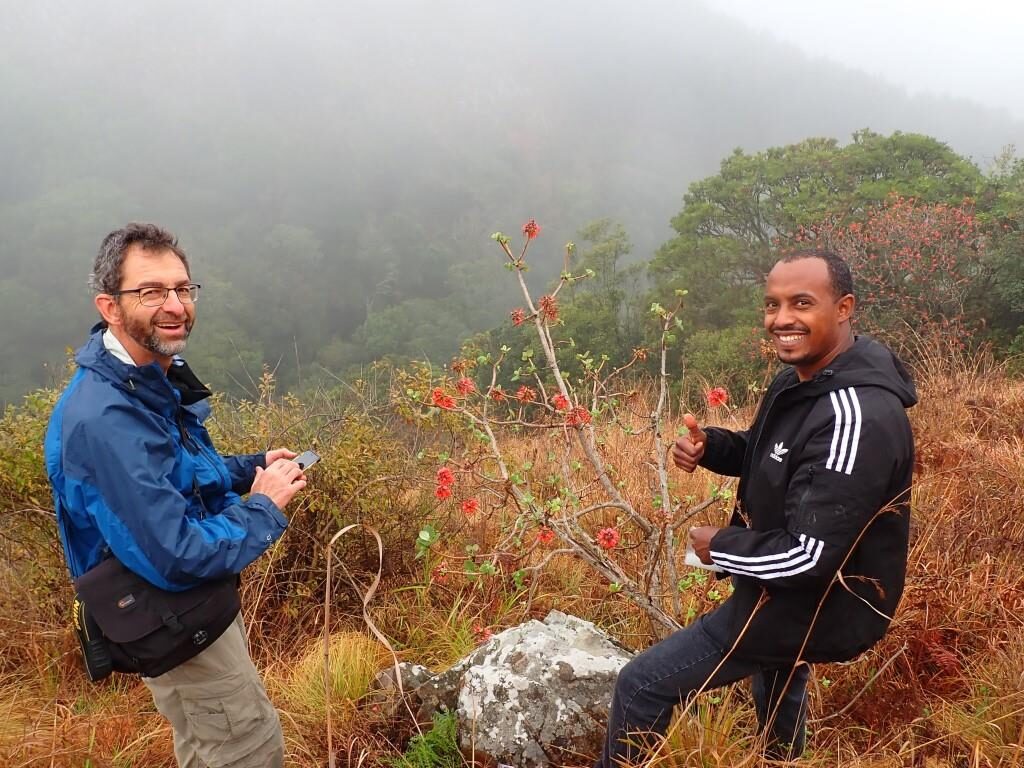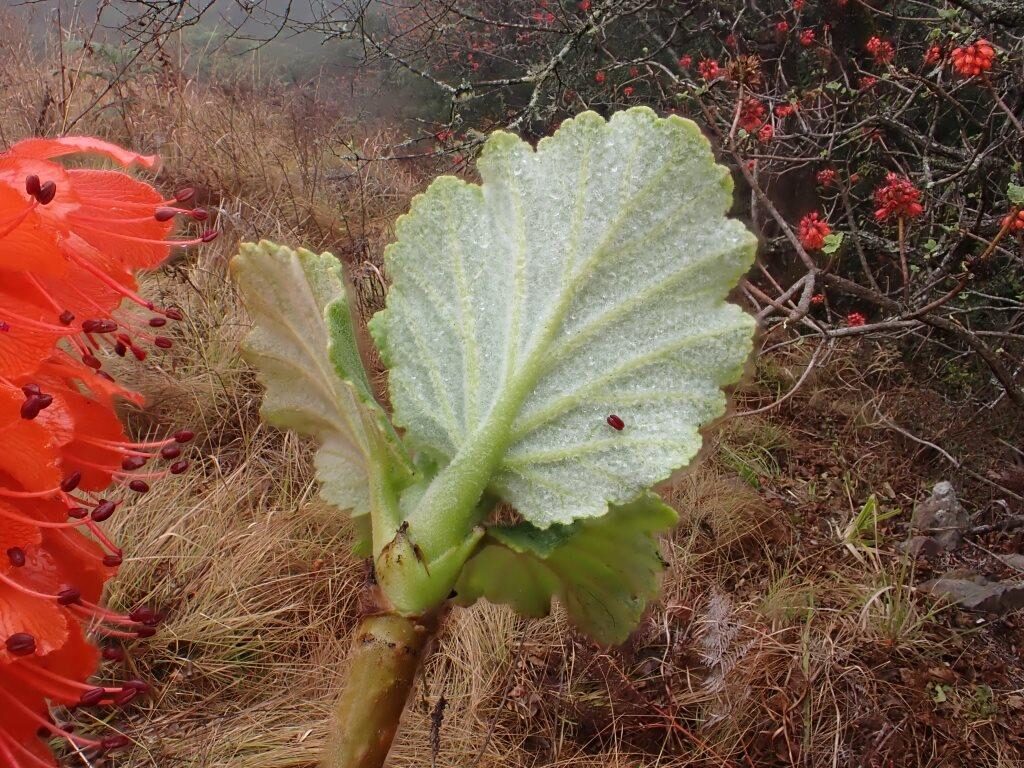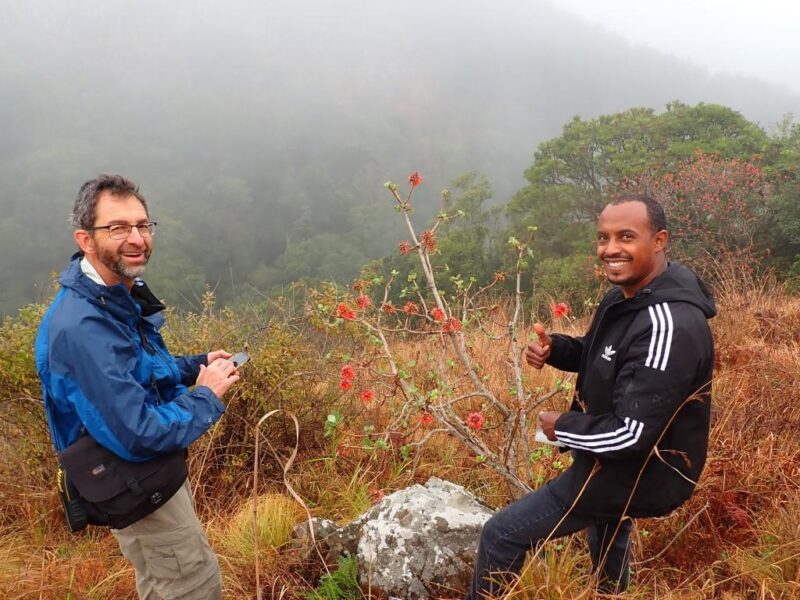
Left: Dave Berger and Dawit Kidanemariam standing at a young Greyia radlkoferi tree
It was a cool and misty morning when Profs Dave Berger, Cobus Visagie and Dr Dawit Kidanemariam visited Mountainlands Nature Reserve recently. This weather is ideal for exploring and what was supposed to be just a two hour detour for the scientists from the Forestry and Agricultural Biotechnology Institute, University of Pretoria turned into a half day event. They specialise in, among others, fungi and crop diseases but Prof Berger wanted to see Woolly Bottlebrush trees – a species that only occur in South Africa.
And if one has a keen interest in these trees, then the Makhonjwa Mountains is your oyster. Here, Greyia radlkoferi (Woolly Bottlebrush) is a mistbelt forest species that grows on rocky outcrops and forest margins. It has attractive red flowers and from a distance can be confused with Erythrina lysistemon (Sacred Coral-tree) which can grow in the same area and flowers at the same time.

The velvety and wet underside of leaves of Greyia radlkoferi.
Prof Berger wanted to look at the leaves of the Woolly Bottlebrushes as these are usually densely velvety below. This is a distinguishing characteristic when compared to Greyia sutherlandii (Glossy Bottlebrush) of which the leaves are hairless and sticky when young. However, young leaves of both species may seem similar which may lead to the kind of questions that scientists like to unravel. And these two species bloom roughly the same time. The Woolly Bottlebrushes usually flower before the leaves appear and luckily for Prof Berger there were several that were in bloom and had leaves. And after visiting three localities with several trees of different ages and habits, the hours have evaporated like the mist and it was time to say good bye.

